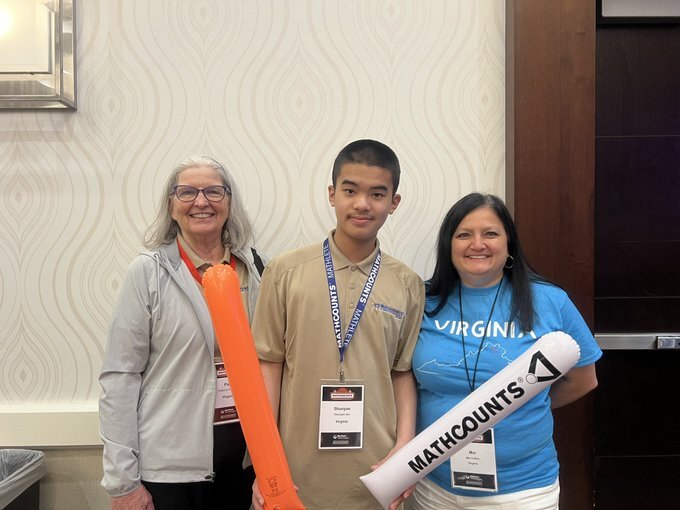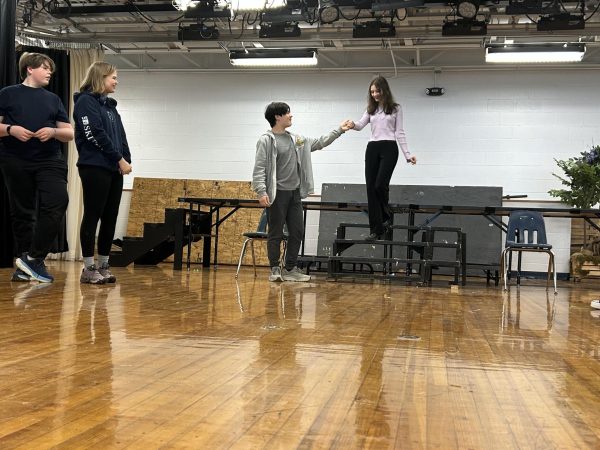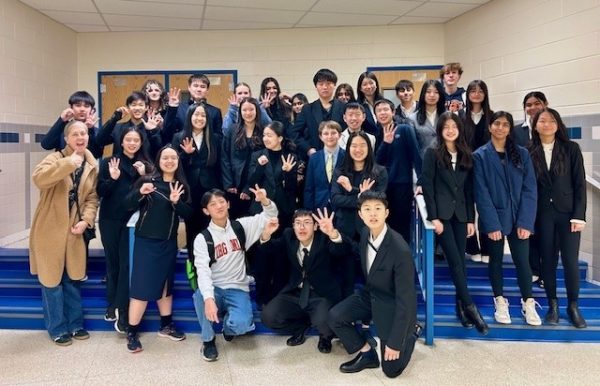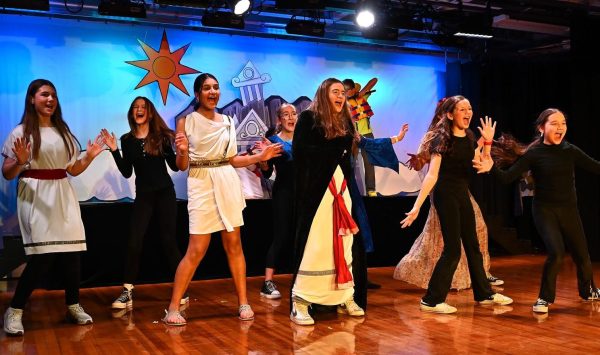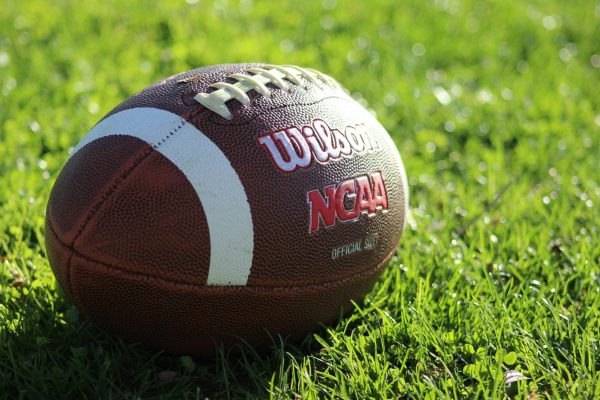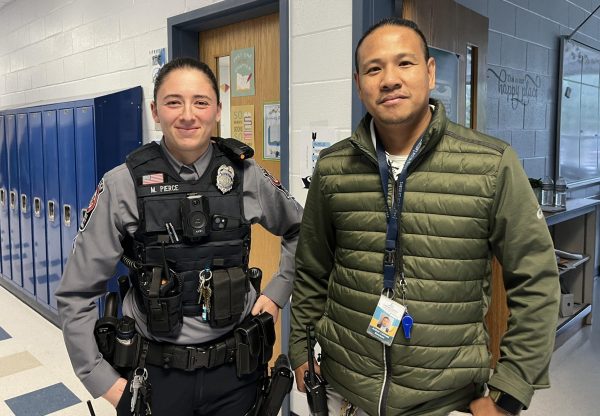Math Whiz Qualifies for U.S. Junior Math Olympiad
Seventh grader Shunyao Y. qualifies for U.S. Junior Math Olympiad after working hard with coaches.
A poster in math teacher Ms. Coffey’s room reads, “4 out of 3 people struggle with math,” humorously illustrating the difficulties of mathematics. However, 7th grader Shunyao Yan has conquered many of these difficulties. In fact, you could really call him a math whiz; Shunyao is a qualifier in the United States America Junior Math Olympiad (USAJMO).
The USAJMO is an annual math competition that started in 1972. It is the third qualifying test on the path to the United States International Math Olympiad (IMO) team. The United States IMO team then competes in the International Math Olympiad against teams of world-class mathematicians from other countries.
Mathletes begin their journey towards the IMO team by taking the American Mathematics Competition (AMC) 10, a 75-minute test with 25 multiple-choice questions, which progressively get harder. Math students from across the country up to 10th grade can register to participate in this competition, and the top 2.5%, who usually score 90-100 out of 150 total points, qualify for the American Invitational Mathematics Competition, more commonly known as the AIME.
The next step in the series of competitions conducted by AMC is AIME, a 15-question 3-hour math competition that is quite prestigious. Unlike the AMC 10, the AIME isn’t a multiple choice test but instead has answers from 0 to 999 inclusive, which makes guessing essentially useless. There are roughly 3000 qualifiers in AIME every year, and the mean/median score for these students is often in the range of 4-5 points out of 15.
The USAJMO is the next step for mathletes, with only 230-240 qualifiers. A student’s AMC10 score added to ten times their AIME score is their JMO index. The qualifying JMO index is usually around 190. Shunyao, with his 109.5 on the AMC10 and his 9 on the AIME, had a JMO index of 199.5, which was enough for him to qualify for the JMO as a seventh grader at Longfellow Middle School, taking his place amongst many high schoolers, some being three years senior, taking the JMO on March 22nd and 23rd.
The USAJMO differs from AIME and AMC in its problem structure and timeframe. The USAJMO is a 9-hour exam taken over the course of 2 days, consisting of 6 mathematical proofs, which usually take much longer and require more complex techniques than AMC and AIME problems.
“Writing the proofs and covering all the holes, it takes another one hour, which means JMO problems take way more time than AIME problems, where you just need to write an answer,” Shunyao says.
Despite the challenges of the USAJMO, Shunyao thinks that he didn’t do bad, saying, “I think it was okay, and better than expected.”
To develop his abilities to pass the past two qualifiers and solve JMO problems, Shunyao devotes much of his free time to studying mathematics. Using the simple methods of solving problems and doing mock tests of past competitions, Shunyao works on problems for many hours a day.
“If it’s like Monday to Friday, I would practice [sic] one and a half hours, and if it’s one Saturday or Sunday, depending on the time I have, I would practice [sic] two and a half hours,” Shunyao says.
As for Shunyao, to work so hard every day and to be so successful, he clearly has a passion for mathematics. “Math problems are just fun in general, and I really just like numbers,” he says. His fortitude, incredible performance, and accuracy in these math contests truly make him one of the most talented young mathematicians in the nation.


